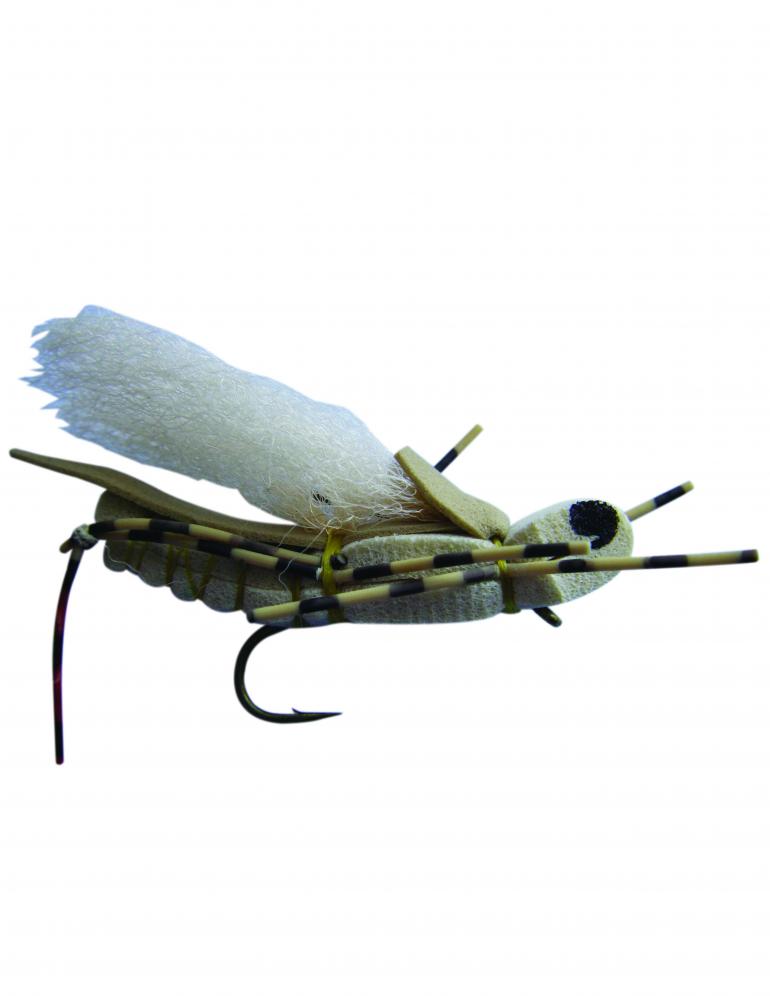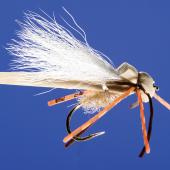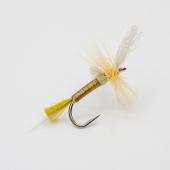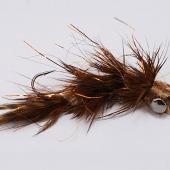The Sweetgrass Hopper
It's what's for dinner.
During much of the year, warm, windy, and bright conditions can make for a slow day of fishing for big river trout on the Yellowstone and Madison, but in the dog days of summer, big trout will eat right in the middle of a bright and hot afternoon. Oftentimes the warmer and windier the day the better, because on those days hoppers get taken for a ride and get deposited into the river where they are easy pickings for the fish. In fact, trout can get downright goofy when these floating filet mignons get on the water.
The Sweetgrass Hopper is a high-floating and very visible hopper pattern, and has a very realistic profile. The fluffy Anton wing makes this fly incredibly easy to see, and with a little silicone floatant it stays up in rough water and will hold up a dropper very well. The sparkly wing also imitates the hopper's translucent wings and adds to its realism.
My best advice when fishing this fly is to let the fish eat it. The big ones that everyone wants to catch are notoriously slow takers. Let them take the fly, and set the hook when the fish has turned back down from the surface.
INGREDIENTS
Hook: Tiemco #5262 #8-10
Thread: Ultra Thread 140, Hopper Yellow
Body: Rainy’s Cross-Link foam 1/8â€, cream
Legs: Medium tan barred rubber legs, back legs colored with red Sharpie pen
Wingcase: Tan opaque Razor foam
Wing: Tan Neer hair or Anton yarn
Cement: Zap-A-Gap
INSTRUCTIONS
Step 1: Give entire hook base coat of thread. Then tie down foam by crisscrossing thread all the way down the body, back and forth, applying tighter wraps toward the end of the abdomen to get a nice taper. Trim, apply Zap-a-Gap to the underbody so the foam attaches securely to the hook.
Step 2: Cut a strip of razor foam, tapered to a point. Tie in as a wing extending past the end of the abdomen. Next take a long bunch of Neer Hair, double it over, and secure on top of the razor foam. Apply Zap and fold over excess razor foam while the Zap is still wet. Trim excess. Knot two pairs of rubber legs, making knotted “kicker legs," and tie in on sides. The knotted part of the legs should extend to the end of the abdomen.
Step 3: Move thread up to the eye of hook and tie down the foam body again. Apply Zap to entire underbody so it is secure to the hook. Make sure it's perpendicular to the shank. Tie in another doubled-over strand of Neer hair and small piece of foam. Trim. Tie in single rubber legs, whip finish, and cement a little around the legs to secure them.
Step 4: Trim head with a razor blade, paint in eyes, and paint red legs with a Sharpie.
Doug McKnight guides for the Yellowstone Angler. He has been tying flies since he was 15 years old.












